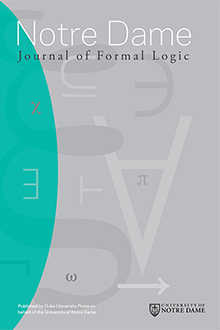Abstract
Recall that for any Boolean algebra (BA) A, the cellularity of A is c(A) = sup{|X| : X is a pairwise-disjoint subset of A}. A pseudo-tree is a partially ordered set (T, ≤) such that for every t in T, the set {r ∊ T : r ≤ t} is a linear order. The pseudo-tree algebra on T, denoted Treealg(T), is the subalgebra of ℘(T) generated by the cones {r ∊ T : r ≥ t}, for t in T. We characterize the cellularity of pseudo-tree algebras in terms of cardinal functions on the underlying pseudo-trees. For T a pseudo-tree, c(Treealg(T)) is the maximum of four cardinals c\sbT, ι\sbT, φ\sbT, and μ\sbT : roughly, c\sbT measures the "tallness" of the pseudo-tree T; ι\sbT the "breadth"; φ\sbT the number of "finite branchings"; and μ\sbT the number of places where T "does not branch." We give examples to demonstrate that all four of these cardinals are needed.
Citation
Jennifer Brown. "Cellularity of Pseudo-Tree Algebras." Notre Dame J. Formal Logic 47 (3) 353 - 359, 2006. https://doi.org/10.1305/ndjfl/1163775442
Information





